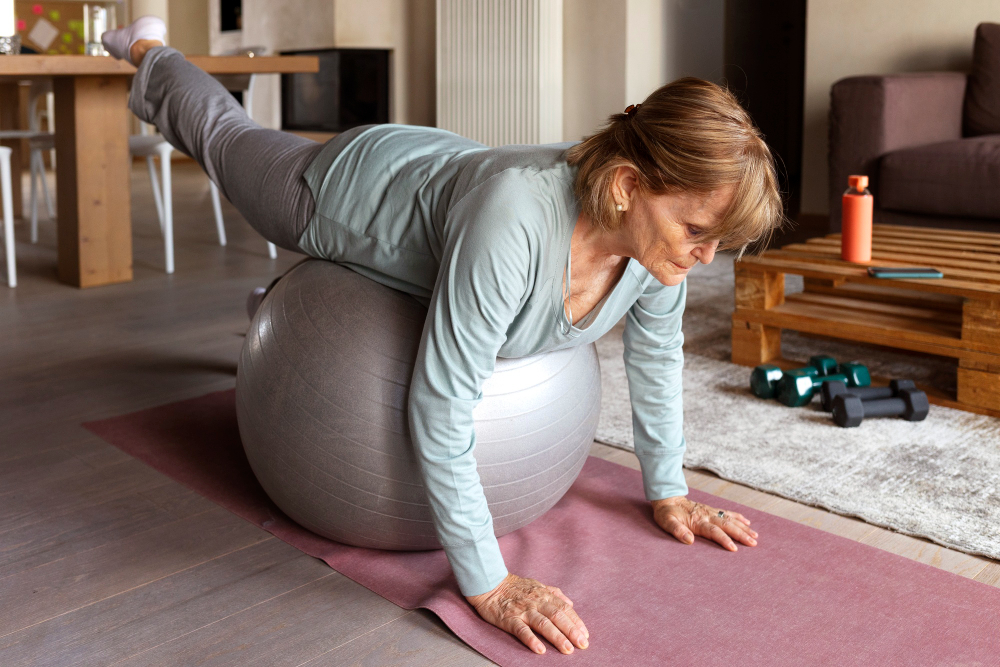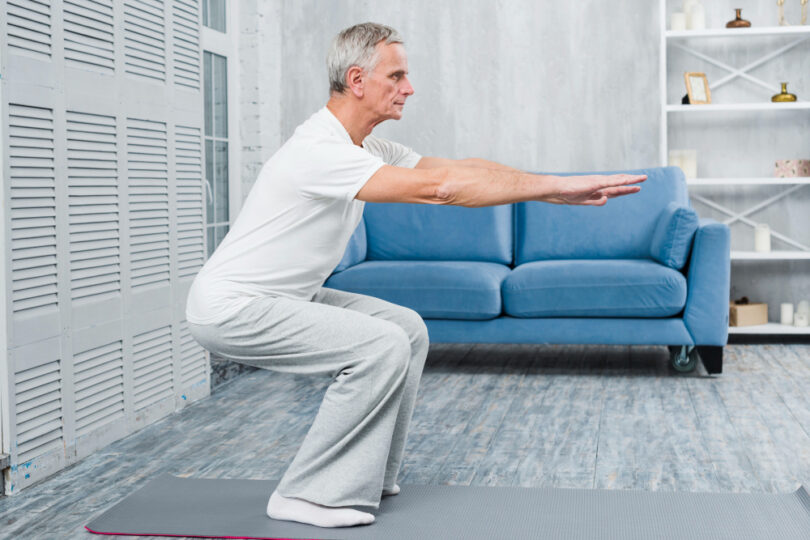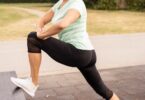Table of Contents
Introduction
The 30 Day Chair Yoga Challenge is an accessible form of exercise that adapts traditional yoga poses to be performed while seated. This challenge is designed to help individuals improve their flexibility, strength, and mindfulness, regardless of their fitness level or mobility. Whether you’re new to yoga or looking for a gentle way to stay active, this challenge provides a structured approach to enhance your well-being.
What is Chair Yoga?
Chair yoga modifies classic yoga poses to be done from a seated position, making it a great option for seniors, those with disabilities, or anyone seeking a low-impact workout. It retains the core benefits of traditional yoga, including improved flexibility, strength, and mental clarity.
Benefits of Chair Yoga
Physical Benefits
Chair yoga helps improve muscle tone, joint health, and overall physical fitness. Regular practice can enhance posture, balance, and coordination, which are crucial for daily activities and preventing falls.
Mental Benefits
Beyond physical health, chair yoga offers significant mental benefits. It promotes relaxation, reduces stress, and improves focus. By incorporating mindfulness and breathing techniques, chair yoga supports emotional well-being and mental clarity.
Preparing for the 30-Day Chair Yoga Challenge
Daily Commitment
Consistency is key to seeing results. Dedicate a few minutes each day to practice the outlined exercises, gradually increasing the duration as you progress.
Weekly Breakdown
The challenge is divided into four weeks, each focusing on different aspects of chair yoga:
- Week 1: Foundations
- Week 2: Building Strength
- Week 3: Enhancing Flexibility
- Week 4: Integrating Mindfulness
Week 1: Foundations
Day 1: Introduction to Chair Yoga
Start with understanding the basics of chair yoga. Familiarize yourself with the chair and practice simple sitting positions.
Day 2: Breathing Techniques
Learn deep breathing techniques to calm the mind and prepare the body for yoga. Focus on diaphragmatic breathing.
Day 3: Seated Mountain Pose
Practice the Seated Mountain Pose to improve posture and engage core muscles. Sit up tall with your feet flat on the ground and hands resting on your thighs.
Day 4: Seated Forward Bend
Enhance your flexibility with the Seated Forward Bend. Reach forward from the hips, keeping your back straight.
Day 5: Seated Twist
Twisting poses help improve spinal mobility. Gently twist to one side, using the chair back for support.
Day 6: Seated Cat-Cow Stretch
The Cat-Cow Stretch promotes spinal flexibility. Alternate between arching and rounding your back while seated.
Day 7: Rest and Reflect
Take a day to rest and reflect on your progress. Note any physical changes or areas for improvement.
Week 2: Building Strength
Day 8: Seated Warrior Pose
The Seated Warrior Pose strengthens the legs and improves balance. Extend one leg to the side while keeping the other bent.
Day 9: Seated Leg Lifts
Leg lifts enhance lower body strength. Lift one leg at a time, holding for a few seconds before lowering it.
Day 10: Seated Side Stretch
The Side Stretch improves flexibility in the side body. Reach one arm overhead and lean to the opposite side.
Day 11: Seated Hip Opener
Hip openers increase hip mobility. Place one ankle on the opposite knee and gently press down on the raised knee.
Day 12: Seated Eagle Arms
The Eagle Arms pose stretches the shoulders and upper back. Cross one arm over the other and lift your elbows.
Day 13: Seated Sun Salutation
Incorporate a seated version of the traditional Sun Salutation to combine multiple poses into a flowing sequence.
Day 14: Rest and Reflect
Take another day to rest and reflect. Consider journaling about how your strength and endurance are improving.
Week 3: Enhancing Flexibility
Day 15: Seated Forward Fold
Revisit the Seated Forward Fold to deepen your stretch. Try to reach a bit further than you did in Week 1.
Day 16: Seated Pigeon Pose
The Pigeon Pose stretches the hip muscles. Sit with one leg bent in front and the other extended behind you.
Day 17: Seated Triangle Pose
The Triangle Pose targets the legs and sides. Extend one leg out and reach toward the same side, keeping the other arm raised.
Day 18: Seated Side Angle Pose
Enhance your stretch with the Side Angle Pose. Lean to one side while extending the opposite arm overhead.
Day 19: Seated Shoulder Stretch
Stretch your shoulders by interlocking your fingers behind your back and lifting your arms.
Day 20: Seated Hamstring Stretch
The Hamstring Stretch improves flexibility in the back of the legs. Extend one leg and reach for your toes.
Day 21: Rest and Reflect
Use this rest day to reflect on your flexibility gains and how your body feels overall.
Week 4: Integrating Mindfulness
Day 22: Seated Meditation
Start incorporating mindfulness with seated meditation. Focus on your breath and try to clear your mind.
Day 23: Seated Body Scan
Perform a body scan to increase awareness of how your body feels from head to toe.
Day 24: Seated Mindful Breathing
Practice mindful breathing to enhance relaxation. Pay attention to each breath’s sensation.
Day 25: Seated Gratitude Practice
Cultivate gratitude by reflecting on things you are thankful for during your yoga practice.
Day 26: Seated Relaxation Techniques
Explore relaxation techniques like progressive muscle relaxation to reduce tension.
Day 27: Seated Visualization
Use visualization to imagine a peaceful place or positive outcome, enhancing your mental well-being.
Day 28: Rest and Reflect
Reflect on how mindfulness practices have impacted your mental state and overall well-being.

Completing the 30-Day Chair Yoga Challenge
Day 29: Reviewing Progress
Review your progress over the past month. Celebrate your achievements and note areas for continued improvement.
Day 30: Celebration and Future Goals
Celebrate completing the challenge and set future goals for maintaining and building on your yoga practice.
Congratulations on embarking on the 30-day chair yoga challenge! As you progress, it’s essential to stay motivated, adapt to your body’s needs, and celebrate your achievements. Here’s a guide to help you successfully complete the challenge.
1. Daily Practice Tips
- Consistency is Key: Aim to practice at the same time each day to build a routine. Whether it’s morning, afternoon, or evening, find a time that works best for you.
- Warm-Up and Cool-Down: Start with gentle stretches to warm up your muscles and end with a relaxing cool-down to prevent soreness.
- Focus on Breathing: Pay attention to your breath. Deep, steady breathing enhances relaxation and helps you maintain focus.
2. Overcoming Challenges
- Stay Positive: There might be days when you feel less motivated. Remember your initial goals and the benefits of yoga to stay encouraged.
- Modify When Needed: Listen to your body and modify poses if necessary. It’s okay to take a break or perform a simpler version of a pose.
- Avoid Comparing: Your progress is unique to you. Avoid comparing yourself to others and focus on your own journey.
3. Tracking Your Progress
- Journal Entries: Keep a daily journal to record your practice, noting any improvements, challenges, and how you feel overall.
- Photo Progress: Take photos at the challenge’s start, mid-point, and end to visually track your progress.
- Celebrate Small Wins: Acknowledge and celebrate small achievements, whether it’s mastering a new pose or feeling more flexible.
4. Maintaining Motivation
- Variety in Practice: Introduce variety in your sessions to keep things interesting. Try different sequences, incorporate props, or follow guided videos.
- Connect with Others: Share your journey with friends, family, or an online community. Encouragement and support from others can be motivating.
- Set Mini Goals: Break down the 30 days into weekly mini-goals. This can make the challenge feel more manageable and provide a sense of accomplishment.
5. Listening to Your Body
- Pain vs. Discomfort: Learn to distinguish between discomfort and pain. Discomfort is common as you stretch your limits, but pain is a signal to stop and rest.
- Rest Days: Don’t hesitate to take rest days when needed. Gentle stretching or meditation can be a good alternative on these days.
- Stay Hydrated: Drink plenty of water before and after your practice to stay hydrated and aid muscle recovery.
6. Reflecting on Your Journey
- Mindfulness and Meditation: Incorporate mindfulness or meditation practices to enhance your mental clarity and emotional well-being.
- Assess Your Progress: At the end of the challenge, take time to assess your progress. Reflect on how far you’ve come and the benefits you’ve experienced.
- Set Future Goals: Use your experience to set fitness or wellness goals. Whether continuing with chair yoga or exploring other forms of exercise, keep moving forward.
FAQs
Is the 28-Day Chair Yoga Free?
The availability of free 28-day chair yoga programs depends on the source. Many online platforms, such as YouTube, offer free chair yoga classes and challenges. Some fitness websites and apps also provide free trial periods or complimentary content. However, other programs might require a subscription or one-time payment. Always check the specific details of the program you’re interested in.
Is Chair Yoga Good for Weight Loss?
Chair yoga can contribute to weight loss as part of a broader fitness and wellness plan. While it may not burn as many calories as more intense forms of exercise, chair yoga can help by:
Improving Metabolism: Regular practice can enhance metabolic function, aiding in weight management.
Building Muscle: Chair yoga strengthens muscles, increasing your resting metabolic rate.
Reducing Stress: Lower stress levels can prevent stress-related weight gain and promote healthier eating habits.
Encouraging Activity: Chair yoga is a way for those with limited mobility to stay active and improve overall fitness.
Does Chair Yoga Work?
Yes, chair yoga is effective for many people, especially those with limited mobility, seniors, or those new to yoga. Benefits include:
Improved Flexibility: Regular practice helps increase flexibility and range of motion.
Enhanced Strength: Chair yoga strengthens muscles, improving overall physical stability.
Better Posture: It promotes better posture and spinal alignment.
Increased Circulation: Gentle movements boost blood circulation.
Mental Well-Being: Chair yoga reduces stress and anxiety and promotes relaxation.
What Happens When You Do Yoga for 30 Days?
Practicing yoga for 30 days can bring about significant physical, mental, and emotional benefits, including:
Increased Flexibility: Noticeable improvement in flexibility and joint range of motion.
Enhanced Strength: Strengthened muscles and better overall body tone.
Improved Posture: Better posture and alignment.
Reduced Stress: Lower stress levels and improved emotional well-being.
Better Focus: Enhanced mental clarity and concentration.
Improved Sleep: Better sleep quality and duration.
Greater Energy Levels: Increased energy and vitality.
Sense of Accomplishment: Completing a 30-day challenge can boost self-esteem and confidence.
By dedicating yourself to a consistent yoga practice for 30 days, you’ll likely experience these positive changes, reinforcing the value of incorporating yoga into your daily routine.
Conclusion
The 30-day chair yoga challenge offers a comprehensive way to enhance physical fitness and mental well-being. By committing to daily practice, you can experience significant improvements in flexibility, strength, and mindfulness. Whether new to yoga or seeking a gentle way to stay active, this challenge provides a supportive and structured approach to achieving your wellness goals.
Related Article:
- Chair Yoga for Seniors: A Free Guide to Enhanced Wellbeing: This guide can provide additional tips and benefits for those starting with chair yoga.
- Free Online Yoga Classes: Offer resources for finding virtual classes to supplement the 30-day challenge.
- Different Types of Chair Yoga for Different Needs: Explain various chair yoga styles that could be integrated into the challenge.
- Chair Yoga for Weight Loss: A Gentle Path to Fitness: Highlight how chair yoga can aid in weight management.
- Creating a Yoga Space at Home: Provide advice on setting up a comfortable and inspiring space for yoga practice.







